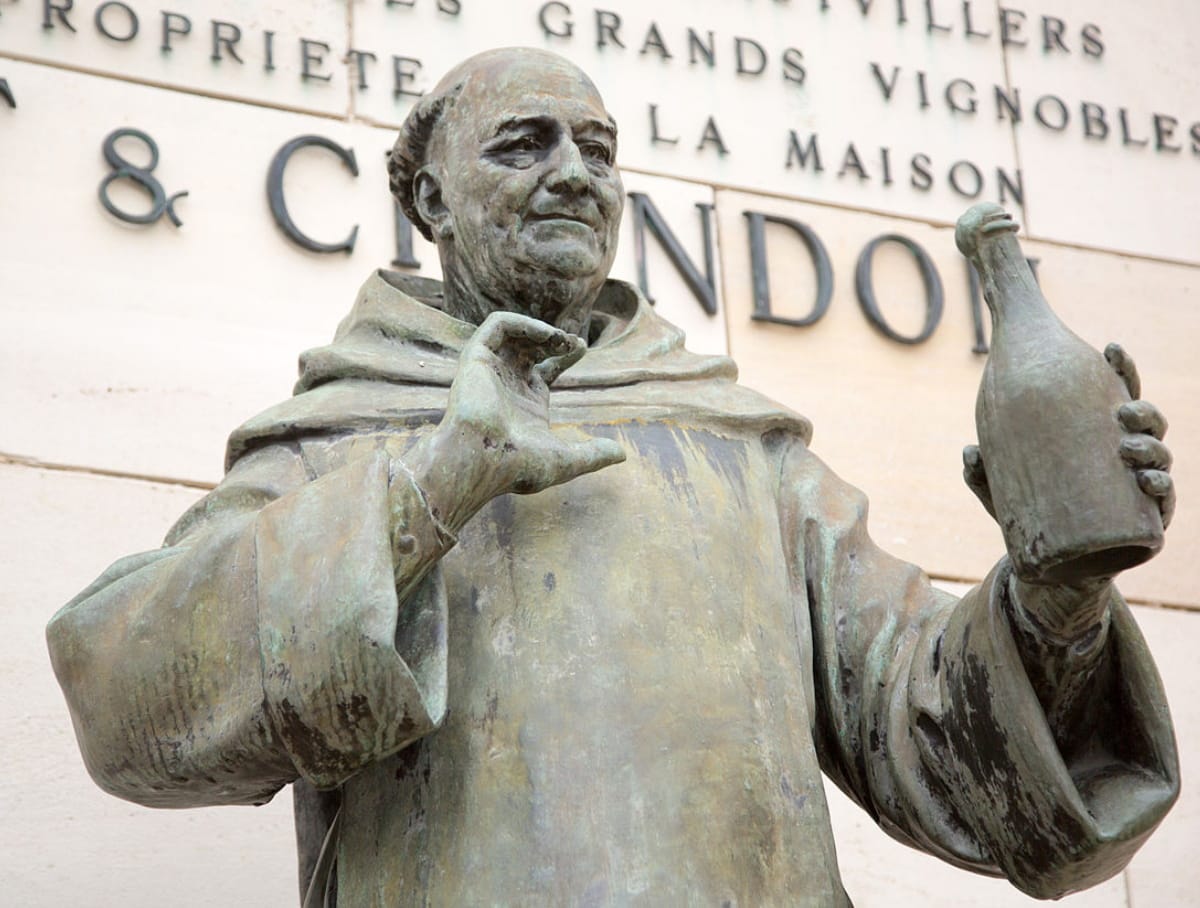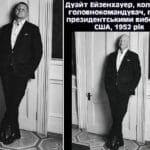It is generally accepted that one of the most popular alcoholic beverages in the world was born thanks to the Benedictine monk. We checked whether this is really so.
Here's what the website of the Russian organization reports "Roskazstvo": “Unlike many other drinks, the exact date of creating the first in the history of the“ most festive wine ”is known. This is August 4, 1668. The place of birth is also known: the Abbey of the Otrielier near the city of Eperna, about 150 km from Paris, in Shampani. The father of the drink - the Benedictine monk Pierre Perignon - went down in history with the title of the house (literally - “venerable”). In the documents of the abbey, a record of the method of wine production that the holy father left was preserved, it was just August 4. Perignon’s house helped to turn the lack of shampoo - its incorrect northern climate, which gave enough acid wines - into dignity.
In wines, which did not have time to go good before the onset of autumn colds, secondary fermentation began with the formation of carbon dioxide. An unpleasant story for winemakers of those times - magic bubbles literally broke barrels. Pierre Perignon came up with the best container for such a wayward drink will be a glass bottle (by that time, glass skill had reached such a development that it was allowed to make quite strong bottles). Historians attribute to perinion the invention of assembly - mixing wines from different grape varieties to create a particularly high -quality drink. ”
You can also learn about this from resources such as "Voice of America", "RIA Novosti" "Satellite", "History of things". The legend of the championship of the French worship minister firmly rooted in the world culture.
Firstly, let's figure out what can be called champagne. In everyday life (especially in the post -Soviet space), this name was assigned to any sparkling wine. However, these concepts are not identical even in the CIS. According to interstate standardadopted by representatives of the five countries of the Commonwealth, sparkling wine is a winery with volumetric shares of ethyl alcohol from 10.0% to 13.5%, saturated with carbon dioxide as a result of complete or incomplete alcohol fermentation in hermetic vessels of grape wort or secondary fermentation of riotous grape wort and/or table -material dining room carbon in a bottle of at least 300 kPa at 20 ° C. For champagne (which in the document is mentioned as “sparkling wine of the traditional name”) these requirements narrowed up to 10.5–13% by the share of ethyl alcohol and 350 kPa by pressure. At the same time Shampanizationthat is, saturation with carbon dioxide sparkling wines as a result of fermentation in hermetically closed vessels, can be carried out in a classic French method (in bottles), a reservoir method or in a continuous stream.
However, compliance with all these conditions is not enough so that the wine is called champagne in the international market. Since 1891 in accordance with Madrid agreement On the international registration of trademarks, the label with the word “champagne” can appear only on a bottle of wine produced in Shampani - the historical field in France, famous for its wine -making traditions. This order was not respected in the USSR, and today Russian manufacturers of the famous “Soviet champagne” are referred to regulations The EU, conducting the difference between the type of product and the name of the place of origin of the goods or geographical indication. In addition, since 1996, only the Cyrillic name of the drink has been used in the country. Which, however, did not resolve the conflict with French manufacturers - in the EU, Russian products have little chance of getting to the shelves under the name.
And since we reached Shampani, it's time to turn to the personality of the perinion house. Indeed, at the turn of 1638–1639 in the champagne town of Saint-Men to the light appeared A boy named Pierre Perignon. In October 1652, when he was almost 14 years old, Pierre entered the Jesuit College in Shalon-Sur-Marne. From another document, it is known that five years later, Perignon informed the notary Saint-Men of his desire to become a priest and join the Order of the Benedictine monks in the Abbey of Saint-Wan. For ten years of service to the god Perinion, apparently, he showed himself from the best side, because he received the House of Honor (from Latin Dominus-“Mr.”) and in 1667 was sent to Abbey OvilierWhere he took the positions of the prosecutor (that is, the administrator) and the head of the cellar - only the abbot stood above him in the rank. Here he stayed until his death in 1715.
By the time Perignon was appointed in Abbey, work was in full swing to reconstruct the complex and the revival of medieval traditions. One of these traditions, generally characteristic of medieval monasteries, was winemaking. It is known that during the year after the arrival of Perinion, wine presses were repaired, and a few years later the first specially designed underground champagne's underground wine cellar with an extensive main gallery designed for 500 barrels was built. Apparently, Perignon was well versed in the issue of the preservation of wine, he once went to such an unprecedented step. However, we are interested in a more difficult issue related to the manufacture of this drink.
Due to the fact that King Louis XIV later took champagne under his protection, a lot of evidence of the successes of the perinion house in winemaking has reached us. However, at the same time, no state or private document says that Perignon ever produces sparkling wine. In fact, the only evidence of the perinion house from the people directly familiar with it is treatise About the state of viticulture and winemaking in Shampani in the late XVII - beginning of the 18th century, who in the area of 1724 was created by the student and successor of the prosecutor, brother of Pierre. Pierre emphasizes that Perignon’s house insisted on various methods that other grapes considered it “impossible, even funny”. However, here is the entire list of achievements that the priest attributes to his teacher:
- clushing grapes for the sake of improving quality and avoiding overproduction;
- harvesting in the cool hours of the morning;
- harvesting in two or three approaches and stripping a vineyard with an interval of several days to select the most ripe and healthy grapes;
- the use of small baskets for harvesting to avoid damage to fruits;
- installation of presses for wine in different villages to reduce the distance of grape transportation;
- making white wine from black grapes;
- mixing various grape varieties;
- Mixing various varieties of wine (bathing).
Even if not in the entire of the above, the perigner was a pioneer, his contribution to winemaking should be considered huge. In particular, mixing of various grape varieties is a technology characteristic of champagne. However, where did the information come from that it was Perignon that invented sparkling wine? According to the popular today among historians versionsFor the first time, this fact was mentioned on October 25, 1821 in a letter to the village priest Jean-Batist Grossar, Mr. D'Arbesus, deputy mayor of the city of AI in Shampani. He wrote: “As you know, Monsieur, it was the famous House of Perignon ... He revealed the secret to the manufacture of sparkling and non -inflammatory white wine and the way to remove the sediment from the bottle.” Why did the testimony of a little -known person have so dispersed? The fact is that even before the French revolution, Grossar was the head of the cellar in the same abbey of Ovilier. However, he, of course, did not find either the house of Perignon or his student brother Pierre, so his words can hardly be believed without evidence. Even Francois Bonal, the most influential historian of Shampani, recognized Grossar's claims "unreasonable and even clearly erroneous." As for phrases “Go faster, I try the stars!”, Which allegedly said the monk, having tasted the drink, then she even appeared in print advertising at the end of the 19th century.
Moreover, there are foreign evidence not in favor of the championship of Perignon. December 17, 1662, Briton Christopher Merret, librarian of the Royal College of Doctors and the founding member of the Royal Society, in his report on winemaking Described Champanization method (Méthode Champenoise). “In recent times, our winemakers have a huge amount of sugar and melases in all types of wines to make them foamy and sparkling,” the Englishman wrote, referring to the second fermentation. At the same time, Merret mentioned the sparkling wines produced in Shampani, but contrasted French bottles (often exploded under pressure) of English, for which a more durable glass was developed that could withstand hisses. Thus, five years before the appearance of the perinion house in the abbey of Ovilia, another person briefly described the technology of manufacturing sparkling wines, which, apparently, were familiar in Shampani itself.
There are other things whose invention is unreasonable for modern sources attributed House to perignon, for example, a cork for bottles. Nevertheless, it is possible to say with great confidence that, despite all his merits, the monk Benedictine invented either her or a drink called “champagne”, which did not prevent the brand Moët & Chandon perpetuate His name is in the name of one of the most famous brands of this drink.
The image on the cover: Wikipedia.
Not true
Read on the topic:
If you find a spelling or grammatical error, please inform us of this, highlighting the text with an error and by pressing Ctrl+Enter.






